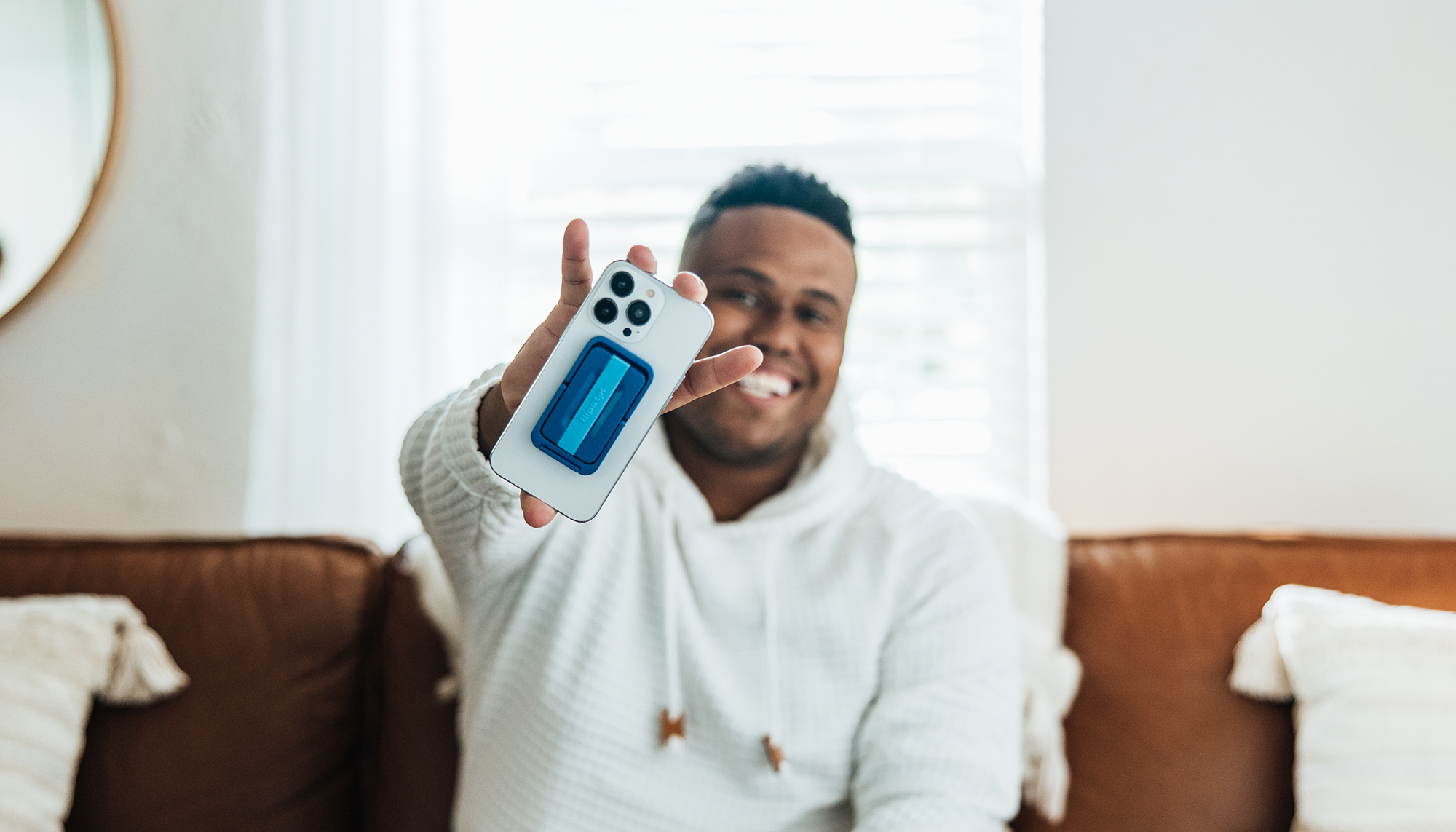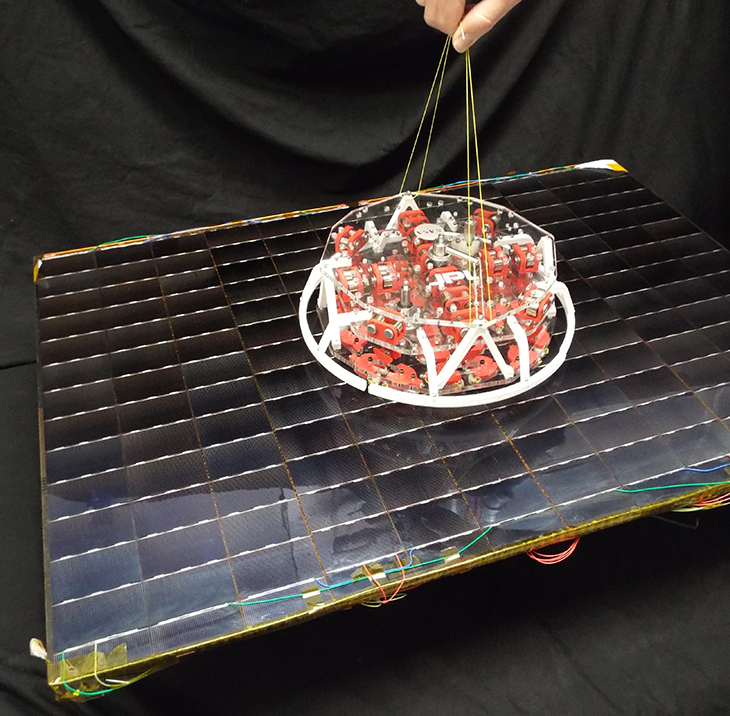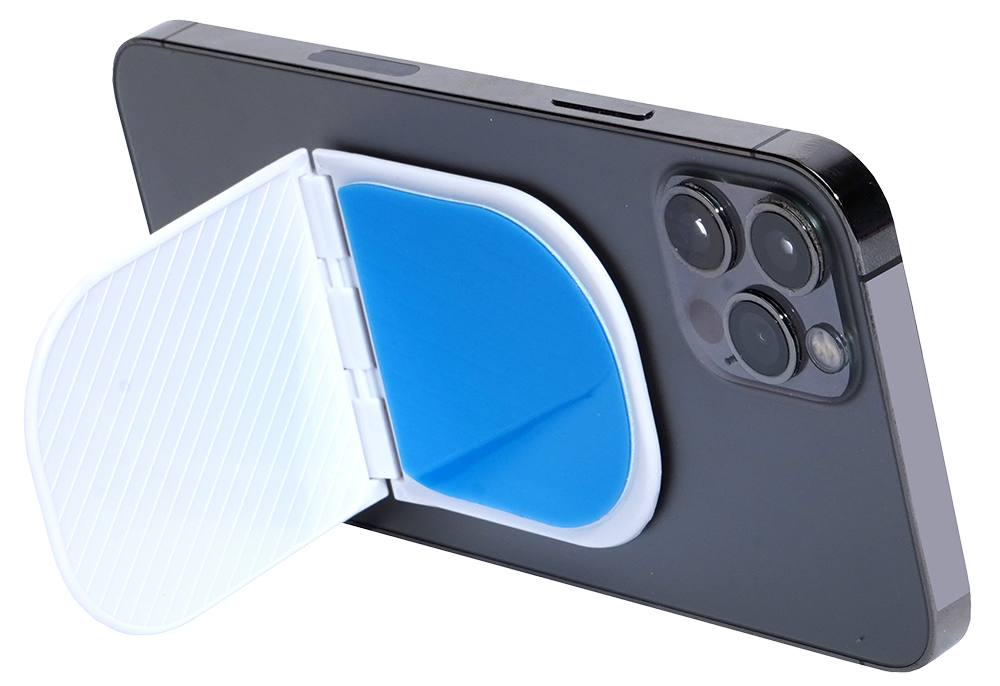
Flipping NASA Tech and Sticking the Landing
Subheadline
NASA tech adds gecko grip to phone accessory
Akeem Shannon’s story began with a phone call.
Finding his sales job unfulfilling and unsure what to do next, he got a call one night from his uncle, Karl Liggin, a systems engineer for the Space Launch System at NASA’s Marshall Space Flight Center, and the two discussed technologies the agency develops. For Shannon, it was the spark of inspiration he needed. Soon after that fateful call, he began looking through published research on NASA’s website and came across a sticky invention that would help him launch a new product – a phone accessory that mounts nearly anywhere, instantly and repeatedly.
In the early 2010s, a team of roboticists at NASA’s Jet Propulsion Laboratory in Southern California were exploring methods for robots to hold tight to surfaces in weightless environments. They hit upon the Van Der Waals force – a weak electrostatic bond that forms at the molecular level when points on two surfaces make contact, and the same force that geckos use to skitter along walls.
“We really learned from geckos. They are able to exploit these Van Der Waals forces by having many tiny hairs,” said Paul Glick, who worked on these adhesives at JPL. “No matter how smooth it looks, in reality almost every surface is actually quite rough. Each hair is able to flex independently and create surface contact at the microscopic scale.”
The microscopic hairs on the gecko’s toe pads are called setae, which gives the technology the moniker of “synthetic setae.” While Shannon originally had the idea to use synthetic setae as a method for wall-mounting a television, the grip was far too weak. But Shannon saw in the NASA work a way it could be used to mount a much smaller screen, one that everyone had in their pockets – a cellphone.
With a synthetic setae attachment on a phone case, the phone could stick to most surfaces, such as a mirror or the back of an airplane seat. With a product design in hand, Shannon founded Flipstik Inc. in St. Louis, Missouri, in 2018. There had been some prior commercialization of synthetic setae, but Shannon said most of the industrial suppliers had issues making a reliable product, and Flipstik would have to be used over and over in a variety of situations. He said the published NASA research, which describes methods of molding and casting the tiny hairs to be more durable, was indispensable to making it portable and reusable.
“We used the NASA research to inform our suppliers and better tailor it to our utility. We were able to help them to improve the product and make it practical for the pocket,” Shannon said.
Initially sold at one mall kiosk, Flipstik was slow to gain traction, but a successful Kickstarter campaign, an appearance on the TV show Shark Tank, and endorsements from major stars in the hip-hop community allowed the company to slowly grow and promote itself. Today, Flipstik has sold more than a million units to several kinds of smartphone users. In addition to people who use a phone to watch videos, it has become popular among online content creators who use it to make them, capturing camera angles on their phones that they couldn’t before. Shannon even said he’s seen deaf users purchase Flipstik to keep their hands free, enabling them to make video calls in sign language.

Much like a gecko’s foot, this apparatus developed at the Jet Propulsion Laboratory uses tiny fibers to grip objects and hold them tight. This work later inspired and informed the development of Flipstik. Credit: NASA

The blue material contained inside Flipstik is synthetic setae, which allows it to stick to almost any flat surface, such as a mirror or the back of an airplane seat. Credit: Flipstik Inc.

Akeem Shannon showcasing Flipstik attached to a smartphone. The product’s design was improved by looking at NASA research to inform its gecko-inspired method of adhering to surfaces. Credit: Flipstik Inc.













